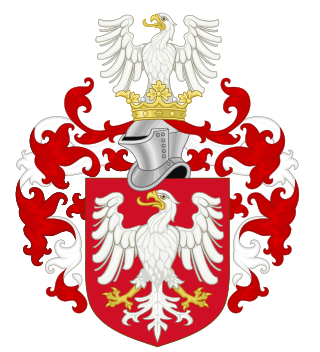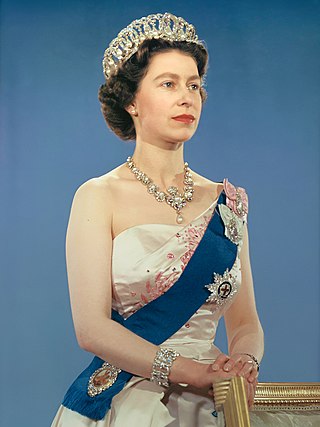The topic of this article may not meet Wikipedia's general notability guideline .(September 2023) |
The topic of this article may not meet Wikipedia's general notability guideline .(September 2023) |
![]() Media related to Princesses of Piedmont at Wikimedia Commons
Media related to Princesses of Piedmont at Wikimedia Commons

The House of Piast was the first historical ruling dynasty of Poland. The first documented Polish monarch was Duke Mieszko I. The Piasts' royal rule in Poland ended in 1370 with the death of King Casimir III the Great.

Tsarina or tsaritsa is the title of a female autocratic ruler (monarch) of Bulgaria, Serbia or Russia, or the title of a tsar's wife. The English spelling is derived from the German czarin or zarin, in the same way as the French tsarine / czarine, and the Spanish and Italian czarina / zarina. (A tsar's daughter is a tsarevna.)
Queen Elizabeth, Queen Elisabeth or Elizabeth the Queen may refer to:
A queen consort is the wife of a reigning king, and usually shares her spouse's social rank and status. She holds the feminine equivalent of the king's monarchical titles and may be crowned and anointed, but historically she does not formally share the king's political and military powers, unless on occasion acting as regent.
A prince consort is the husband of a monarch who is not a monarch in his own right. In recognition of his status, a prince consort may be given a formal title, such as prince. Most monarchies do not allow the husband of a queen regnant to be titled as a king because it is perceived as a higher title than queen, however, some monarchies use the title of king consort for the role.

A queen regnant is a female monarch, equivalent in rank, title and position to a king. She reigns suo jure over a realm known as a kingdom; as opposed to a queen consort, who is married to a reigning king; or a queen regent, who is the guardian of a child monarch and rules pro tempore in the child's stead or instead of her husband who is absent from the realm, be it de jure in sharing power or de facto in ruling alone. A queen regnant is sometimes called a woman king. A princess, duchess, or grand duchess regnant is a female monarch who reigns suo jure over a principality or (grand) duchy; an empress regnant is a female monarch who reigns suo jure over an empire.

Consort is a village in eastern Alberta, Canada. It is located at the intersection of Highway 12 and Highway 41, approximately 250 km southeast of Edmonton, 252 km northeast of Calgary, and 283 km west of Saskatoon. The Saskatchewan border is approximately 60 km to the east.
Suo jure is a Latin phrase, used in English to mean 'in his own right' or 'in her own right'. In most nobility-related contexts, it means 'in her own right', since in those situations the phrase is normally used of women; in practice, especially in England, a man rarely derives any style or title from his wife although this is seen in other countries when a woman is the last heir of her line. It can be used for a male when such male was initially a 'co-lord' with his father or other family member and upon the death of such family member became the sole ruler or holder of the title "in his own right" (alone).
This is an index of lists about women.
This is the family tree of Sinhalese monarchs.